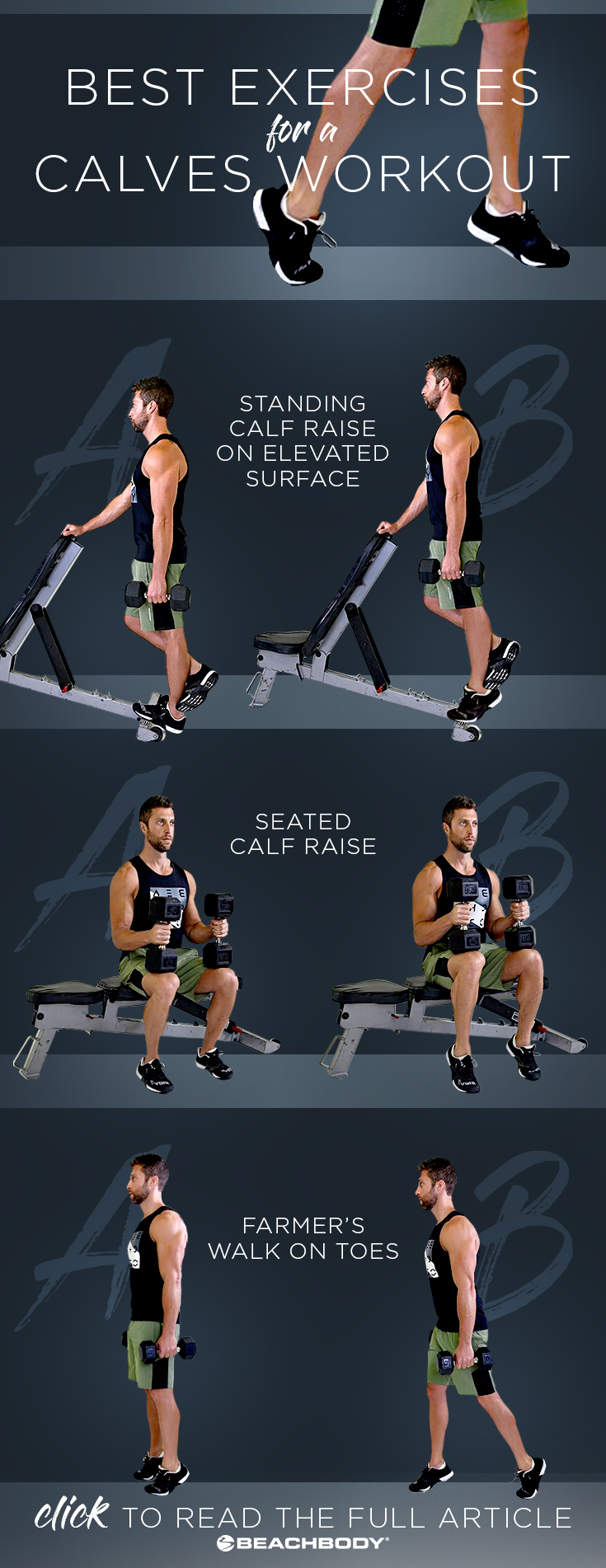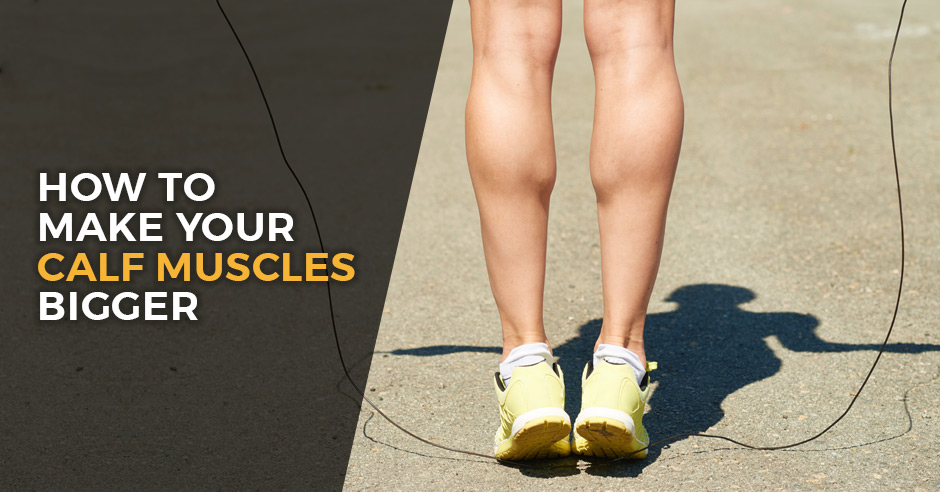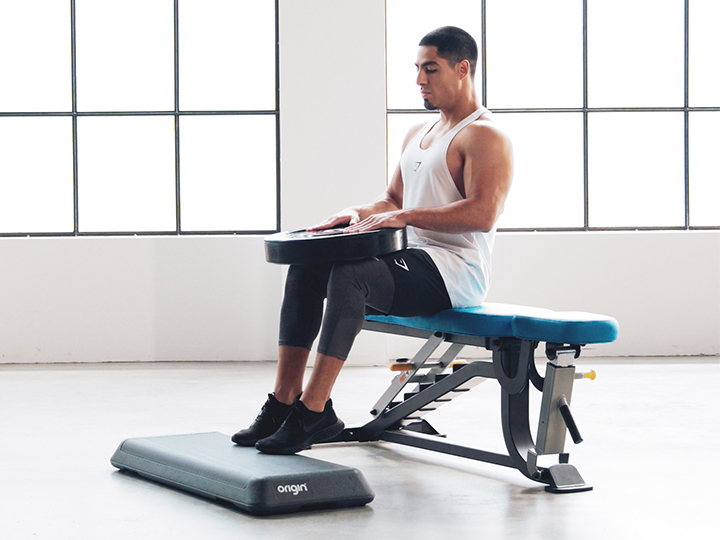Do you ever look at your calves and wish they were stronger and more toned? Well, you’re not alone! Many people struggle with building and defining their calf muscles. But don’t worry, there are some effective exercises that can help you achieve those strong and sculpted calves you’ve always wanted. In this article, we will discuss these exercises in detail, so you can start working on those calves and see the results you desire.
When it comes to building stronger calves, there are a few key exercises that you should incorporate into your workout routine. Calf raises are a classic exercise that target the calf muscles specifically. Stand with your feet shoulder-width apart and slowly raise your heels off the ground, using only the balls of your feet.
Hold the position for a few seconds and then lower your heels back down. This exercise can be done with or without added weights for an extra challenge. Another effective exercise is jumping rope. Not only does it provide a great cardio workout, but it also targets the calves as you repeatedly jump up and down.
By consistently incorporating these exercises into your fitness routine, you can start building stronger calves and achieving the toned look you desire. To learn more about other effective exercises for your calves, keep reading our article.

Define calf muscles
Calf muscles, also known as the gastrocnemius and soleus muscles, are located in the lower leg and play a crucial role in various movements, such as walking, running, and jumping. They are responsible for the flexion and extension of the foot, allowing us to push off the ground and propel ourselves forward.
Importance of strong calves
Having strong calf muscles is not only important for athletes and fitness enthusiasts, but for individuals of all ages and fitness levels. Strong calves provide a solid foundation for lower body strength, stability, and balance. They also enhance athletic performance, reduce the risk of lower leg injuries, and contribute to a better overall aesthetic.
Challenges with small calves
However, many people struggle with the size and strength of their calf muscles. Genetics, exercise routine, nutrition, and hormonal factors can all play a role in determining calf size. While some individuals naturally have larger calf muscles, others may have smaller calves, leading to feelings of frustration and insecurity.
Factors Affecting Calf Size
Genetics
Genetics play a significant role in determining the size and shape of our calf muscles. Some individuals are genetically predisposed to larger, more defined calves, while others may have a naturally smaller calf size. Unfortunately, we cannot change our genetics, but we can focus on improving the strength of our calves through targeted exercises.
Exercise routine
The type and intensity of exercise we engage in can also impact the size of our calf muscles. A lack of specific calf exercises in our workout routine can lead to underdeveloped calves. Similarly, overtraining and neglecting proper rest and recovery can hinder muscle growth and development.
Nutrition
Nutrition plays a vital role in muscle growth and development, including the calf muscles. Adequate protein intake is essential for muscle repair and growth. Additionally, consuming a well-balanced diet rich in vitamins and minerals can support overall muscle health and strength.
Hormonal factors
Hormonal factors, such as testosterone and growth hormone levels, can influence muscle growth in individuals of all genders. Higher levels of these hormones are associated with greater muscle mass and strength. However, other factors, such as age and overall health, can also affect hormonal balance and, subsequently, calf muscle development.

Understanding Calf Muscles
Anatomy of the calf muscles
The calf muscles consist of two main muscles: the gastrocnemius and the soleus. The gastrocnemius muscle is the larger of the two and is visible from the back of the leg. The soleus muscle is located beneath the gastrocnemius and is not as visible.
Function of calf muscles
The primary function of the calf muscles is to control the movement of the foot and ankle. They work together to extend the foot and propel the body forward during activities such as walking, running, and jumping. Strong calf muscles also help stabilize the ankle joint and provide balance during various movements.
Different types of calf muscles
There are three types of calf muscles: the medial, lateral, and deep posterior calf muscles. The medial calf muscles, including the gastrocnemius and soleus, are responsible for generating power during movements such as jumping and running. The lateral calf muscles, which include the peroneals, aid in balance and stability. The deep posterior calf muscles, such as the tibialis posterior, play a role in supporting the arches of the feet.
Benefits of Stronger Calves
Improved balance and stability
Strong calf muscles contribute to improved balance and stability. They help stabilize the ankle joint and provide a solid foundation during various activities, such as standing on one leg or walking on uneven surfaces. This is particularly important for older adults, as strong calf muscles can help prevent falls and injuries.
Enhanced athletic performance
Whether you’re a professional athlete or an occasional gym-goer, strong calf muscles can significantly enhance your athletic performance. They improve power and explosiveness, allowing you to jump higher, run faster, and change direction more efficiently. Strong calves also contribute to better endurance, enabling you to perform at a higher intensity for a more extended period.
Reduced risk of lower leg injuries
Weak calf muscles can increase the risk of lower leg injuries, such as calf strains, Achilles tendonitis, and shin splints. By strengthening your calves, you can prevent these injuries and improve the overall health and durability of your lower legs. This is particularly essential for individuals who participate in high-impact activities, such as running and jumping.
Better overall aesthetic
Let’s face it, strong calves not only improve your athletic performance and reduce your risk of injuries, but they also contribute to a better overall aesthetic. Well-developed calf muscles can give your legs a more sculpted and defined appearance, adding to your overall physical attractiveness.

Effective Exercises for Calf Muscles
Standing calf raises
Standing calf raises are a classic exercise that targets the gastrocnemius muscles. To perform this exercise, stand with your feet shoulder-width apart and the balls of your feet on the edge of a step or raised platform. Slowly raise your heels off the ground, lifting your body weight onto your toes. Hold for a brief moment, then lower your heels back down below the surface of the step. Repeat for the desired number of reps.
Seated calf raises
Seated calf raises primarily target the soleus muscles, which are located beneath the gastrocnemius. To perform this exercise, sit on a bench or chair with a weight placed on your thighs, just above the knees. Rest your toes on a block or step, and using your calf muscles, raise your heels off the ground as high as possible. Hold for a moment, then lower your heels back down. Repeat for the desired number of reps.
Calf raises on the leg press machine
If you have access to a leg press machine, you can also incorporate calf raises into your workout. Simply adjust the machine so that your toes are resting on the edge of the footplate. Push the footplate away from your body, extending your knees. Once your legs are fully extended, raise your heels off the footplate by contracting your calf muscles. Hold for a brief moment, then lower your heels back down. Repeat for the desired number of reps.
Jump rope exercises
Jump rope exercises are an excellent way to engage the calf muscles and improve their strength and endurance. Jump rope for a set amount of time, focusing on using your calf muscles to propel yourself off the ground. Jump rope exercises can be modified to suit your fitness level, whether you’re a beginner or an advanced jumper.
Calf stretches
Stretching your calf muscles is crucial for their flexibility and overall health. Stand facing a wall, with one foot slightly in front of the other. Place your hands on the wall for support, and bend your front knee while keeping your back leg straight. You should feel a stretch in your calf muscle. Hold this stretch for 15-30 seconds, then switch legs. Repeat the stretch on the opposite side.
Proper Form and Techniques
Positioning of feet
When performing calf exercises, the positioning of your feet plays a crucial role in targeting the calf muscles effectively. To target the gastrocnemius muscles, position your feet with your toes pointed straight ahead. To target the soleus muscles, position your feet with your toes pointed slightly outward.
Range of motion
To maximize the effectiveness of calf exercises, it is essential to perform them through a full range of motion. This means lowering your heels down as far as possible and raising your heels as high as possible during each repetition. Avoid cutting the range of motion short, as this can limit the activation of the calf muscles.
Breathing techniques
Proper breathing techniques can help improve your performance during calf exercises. Inhale deeply before starting the movement and exhale as you raise your heels off the ground. This will help you maintain focus and control throughout each repetition.

Creating a Calf Workout Routine
Frequency and duration
To effectively build stronger calves, it is recommended to incorporate calf exercises into your workout routine two to three times per week. Start with two sets of 10-12 repetitions for each exercise and gradually increase the intensity and volume as your calf muscles become stronger.
Progressive overload
Progressive overload is crucial for continuous muscle growth and development. As your calf muscles adapt to the exercises, gradually increase the weight or resistance to challenge them further. This can be done by using heavier weights, incorporating resistance bands, or adjusting the incline on the leg press machine.
Variety of exercises
Including a variety of calf exercises in your workout routine is essential for well-rounded calf development. Experiment with different exercises, such as standing and seated calf raises, to target both the gastrocnemius and soleus muscles. Additionally, incorporating jump rope exercises and calf stretches can contribute to improved calf strength and flexibility.
Rest and recovery
Proper rest and recovery are just as important as the actual exercise when it comes to muscle growth. Allow your calf muscles at least 48 hours of rest between intense workout sessions. This will give them time to repair and rebuild, ultimately leading to stronger and more developed calves.
Supplementary Strategies
Incorporating resistance bands
Resistance bands can be a valuable tool for strengthening the calf muscles. Attach a resistance band to an anchor point and loop it around the balls of your feet. Perform calf raises, focusing on contracting your calf muscles against the resistance of the band. This will provide an additional challenge and stimulate further muscle growth.
Using weighted vests
Using weighted vests can increase the intensity of your calf exercises. By adding weight to your body, you are forcing your calf muscles to work harder, leading to increased strength and muscle growth. Start with a lightweight vest and gradually increase the weight as you become more comfortable with the added resistance.
Sprint training
Incorporating sprint training into your workout routine can also contribute to stronger calf muscles. Sprinting involves explosive and powerful movements, which heavily engage the calf muscles. Whether you choose to sprint outdoors or on a treadmill, incorporating sprints into your routine can yield significant calf muscle gains.
Hill sprints
Hill sprints are an advanced form of sprint training that specifically targets the calf muscles. Find a steep hill and sprint uphill at maximum effort for a short distance. Focus on contracting your calf muscles with each powerful stride. Hill sprints not only build strength in the calves but also increase cardiovascular fitness and overall endurance.

Common Mistakes and How to Avoid Them
Neglecting full range of motion
One common mistake when performing calf exercises is neglecting to go through a full range of motion. To avoid this, be mindful of lowering your heels down as far as possible and raising them as high as possible during each repetition. This will ensure that you are targeting the calf muscles effectively.
Using excessive weights
Another mistake is using excessive weights or resistance, especially when starting with calf exercises. Gradually increase the weight and resistance over time to prevent injury and allow your calf muscles to adapt and grow stronger.
Ignoring proper form
Proper form is crucial for targeting the calf muscles effectively and avoiding unnecessary strain or injury. Pay attention to your body positioning, range of motion, and breathing techniques. If you are unsure about proper form, consider seeking guidance from a fitness professional.
Skipping rest days
Rest days are essential for muscle recovery and growth. Skipping rest days and overtraining can hinder muscle development and lead to injury. Listen to your body and prioritize rest and recovery as much as you prioritize your workout routine.
Overtraining
Overtraining can hinder calf muscle growth and lead to fatigue, decreased performance, and increased risk of injury. Be mindful of the frequency and intensity of your workouts, and make sure to incorporate rest days and proper recovery methods into your routine.
Conclusion
Building stronger calves is not an impossible task, even if you have small calf muscles. By understanding the factors that contribute to calf size, performing effective exercises with proper form and technique, and incorporating supplementary strategies, you can achieve stronger and more defined calves.
Consistency and dedication are key. Incorporate calf exercises into your regular workout routine, gradually increase the intensity and volume, and focus on proper rest and recovery. With time, effort, and the right approach, you can build stronger calves and reap the numerous benefits they have to offer.
Remember, everyone’s fitness journey is unique, and calf size may vary from person to person. Embrace your individuality and focus on improving your calf strength and overall fitness rather than obsessing over their size. The journey towards stronger calves is just as important as the destination.




